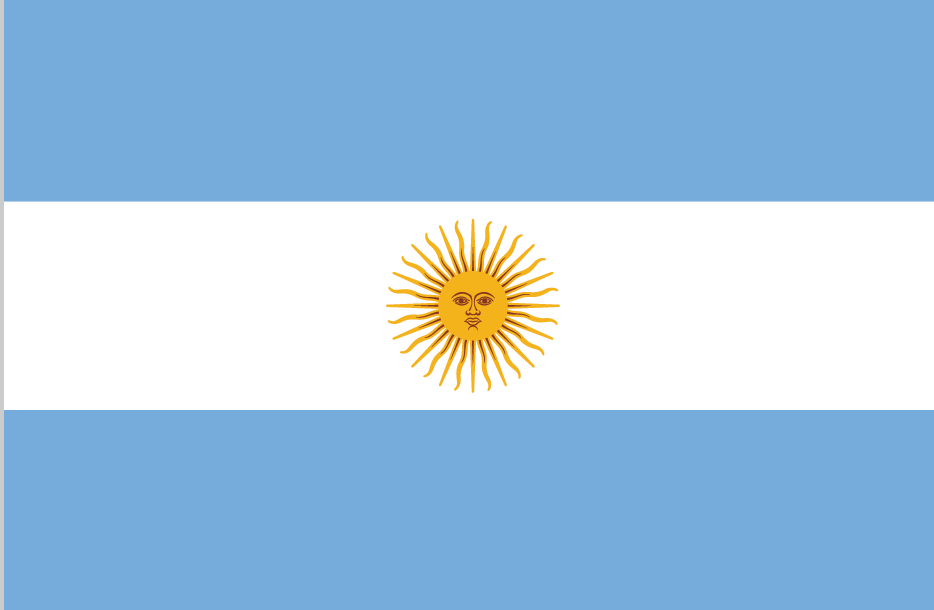Travel Destination
Argentina
Argentina is a South American country known for its diverse landscapes, including the Andes Mountains, vast plains, and the iconic Pampas region. Situated in the southern part of the continent, Argentina shares borders with Chile to the west, Bolivia to the north, Paraguay to the northeast, Brazil to the northeast, and Uruguay to the east. Spanish is the official language, and the country is renowned for its rich cultural heritage, vibrant tango music and dance, and its passion for soccer.

Buenos Aires
Discover the captivating charm of Buenos Aires, the vibrant capital of Argentina. Immerse yourself in the passionate world of tango and marvel at European-style architecture. Explore diverse neighborhoods like La Boca with its colorful houses and artsy vibe, or wander through the elegant streets of Recoleta, home to fine museums and the famous Recoleta Cemetery. Treat your taste buds to amazing Argentine cuisine, savoring sizzling steaks and delicious Malbec wine. Buenos Aires promises an unforgettable experience filled with enchantment and excitement.
Rosario
Nestled along the scenic Parana River, Rosario awaits with its magnetic charm. As Argentina’s third-largest city, it boasts a rich cultural tapestry. Stroll down the lively streets of Pichincha, where bars and restaurants entice with local delicacies. Visit the iconic National Flag Memorial and delve into the nation’s history. Explore the picturesque Independence Park and its stunning Rosario Islands. Admire the neoclassical beauty of the Palace of Lions and the splendor of the Municipal Theatre. Rosario is a captivating destination for all explorers.
Cordoba
Nestled in the heart of Argentina, Córdoba stands as a harmonious blend of colonial history and modern urbanization. The city, which is the country’s second-largest, boasts a rich tapestry of Jesuit churches, monasteries, and universities that date back to the 17th century, earning parts of it a UNESCO World Heritage designation. The Plaza San Martín, with its iconic Catedral de Córdoba, serves as a testament to the city’s architectural grandeur and is a must-visit for history enthusiasts.
Beyond its historical precincts, Córdoba offers a plethora of natural attractions. The Sierras de Córdoba mountain range provides a picturesque backdrop to the city and is a haven for trekkers and nature lovers. The region’s numerous rivers, valleys, and lakes, such as the popular Lago Los Molinos, offer opportunities for water sports and relaxation. For those looking to experience the vibrant culture of Argentina, Córdoba’s lively festivals, traditional dance events, and local culinary delights provide an immersive experience. Whether you’re a history buff, nature enthusiast, or cultural explorer, Córdoba promises a memorable Argentinian escapade.
Ushuaia
Nestled at Argentina’s southern tip, Ushuaia, the world’s southernmost city, entices with breathtaking landscapes. Surrounded by mountains and the Beagle Channel, it offers wilderness and modernity in harmony. Discover Tierra del Fuego National Park’s dense forests, serene lakes, and rugged trails. Cruise the Beagle Channel, spotting seals and glaciers. Experience the End of the World Train, a historic railway with scenic vistas. History enthusiasts will love the Maritime Museum. Ushuaia’s beauty and adventurous spirit promise an unforgettable experience.
Rio Grande
Nestled in southern Brazil, Rio Grande beckons with its coastal charm and rich maritime history. This vibrant city boasts beautiful beaches, such as Praia do Cassino, perfect for relaxation and water sports. Stroll along the Avenida Rio Grande, lined with shops and cafes, offering a taste of local culture and cuisine. Explore the Oceanographic Museum, showcasing the region’s maritime heritage. Don’t miss the São Pedro lighthouse, offering stunning panoramic views. Rio Grande promises a delightful escape for all travelers seeking coastal beauty and maritime allure.
Santa Fe
Nestled in Argentina, Santa Fe captivates with its rich history and vibrant culture. Wander through charming streets, encounter colonial and modern architecture. The iconic National University of the Littoral stands proudly, reflecting the city’s educational legacy. Explore the Museum of Contemporary Art, showcasing local and international artists. For serenity, visit Parque Federal, perfect for walks and picnics. Santa Fe hosts diverse festivals, celebrating heritage and art. With warm hospitality and cultural treasures, Santa Fe offers an unforgettable experience.
Country information
- Country code: AR, ARG (ISO 3166-1)
- Population: 44 938 712 (2019)
- Currency: Argentine peso ($, ARS)
- Calling code: +54





